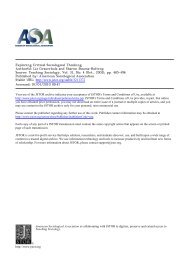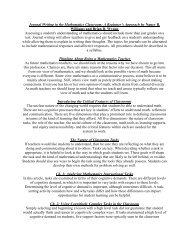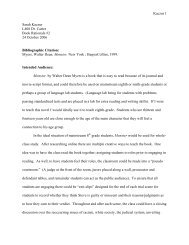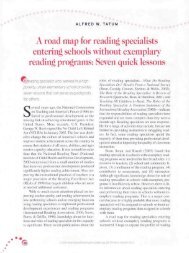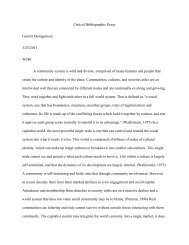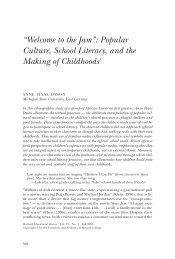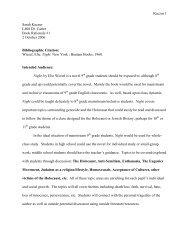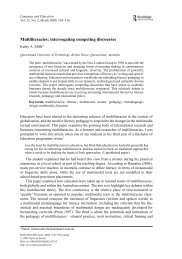Proposal - Oncourse - Indiana University
Proposal - Oncourse - Indiana University
Proposal - Oncourse - Indiana University
Create successful ePaper yourself
Turn your PDF publications into a flip-book with our unique Google optimized e-Paper software.
Section III: Body of <strong>Proposal</strong><br />
(A maximum of 5 pages is allowed for answers to questions 1-10.)<br />
Objectives: Smokers have increased periodontal disease (caused by the anaerobic<br />
Porphyromonas gingivalis) and dental caries (caused by the facultative anaerobe<br />
Streptococcus mutans). These bacteria are known to bind to or interact with gingival<br />
epithelial cells and gingival fibroblast cells-P. gingivalis contributing to periodontal<br />
disease and dental pulp cells-S. mutans causing dental root caries and endothelial<br />
cells-S. mutans associated with atherosclerosis. However, little is known about the<br />
effects of tobacco directly on these bacteria on their ability to affect these human cells<br />
and to cause disease. It is our hypothesis that tobacco up-regulates the expression of<br />
certain virulence genes and proteins to increase the pathogenic potential of P. gingivalis<br />
and S. mutans. The objectives of this research are to investigate the effects that<br />
nicotine and tobacco-treated bacterial cells have on these human cells with<br />
respect to their release of pro-inflammatory cytokines and matrix<br />
metalloproteinases (MMP). This will contrast with our 2011 summer proposal where<br />
students will focus on the effects of virulence factors from tobacco-treated bacteria<br />
secreted into culture supernatant on several human cell types and the subsequent<br />
release of pro-inflammatory cytokines and MMP. In addition, we will add analysis of<br />
endothelial cells. Each student will grow bacteria in the Gregory lab and then move<br />
after about 2-3 months to either the Windsor or Song labs to assess the effects of the<br />
bacterial cells on human cells.<br />
Significance: The project will begin to address the important roles these bacteria play<br />
in periodontal disease and caries of smokers. The long term goal is to develop<br />
treatment modalities to reduce the effects of smoking on periodontal disease and caries.<br />
Student Opportunity: Students will have the opportunity to be present at the<br />
beginning of this exciting project. They will be able to experience at least two different<br />
laboratories. We have not examined the effects of these bacterial cells on human oral<br />
cells previously and expect that this will lead to information that may elucidate additional<br />
mechanisms that the bacteria use in causing disease.<br />
Research Methodology: S. mutans UA159 and P. gingivalis ATCC 33277 will be<br />
incubated in Tryptic Soy broth (TSB) or modified Schaedler broth, respectively,<br />
with optimal concentrations of cigarette smoke condensate (CSC), nicotine and<br />
dissolvable smokeless tobacco (DST) in the Gregory lab. These optimum<br />
concentrations will be determined from previous student data by using the<br />
concentrations that increase certain bacterial virulence factors such as S. mutans<br />
growth, biofilm formation, and antigen I/II expression, and proteolytic activity for P.<br />
gingivalis. Typically, these concentrations are 0.25 mg of CSC/ml, 0.5 mg of<br />
nicotine/ml and 3.3% for DST. The cultures will be grown in the presence of the<br />
tobacco products for 24 h at 37 o C in 5% CO 2 and centrifuged at 10,000 x g for 15 min.<br />
MURI Mentor’s Project <strong>Proposal</strong> Form, Updated: 1-25-2011 3



